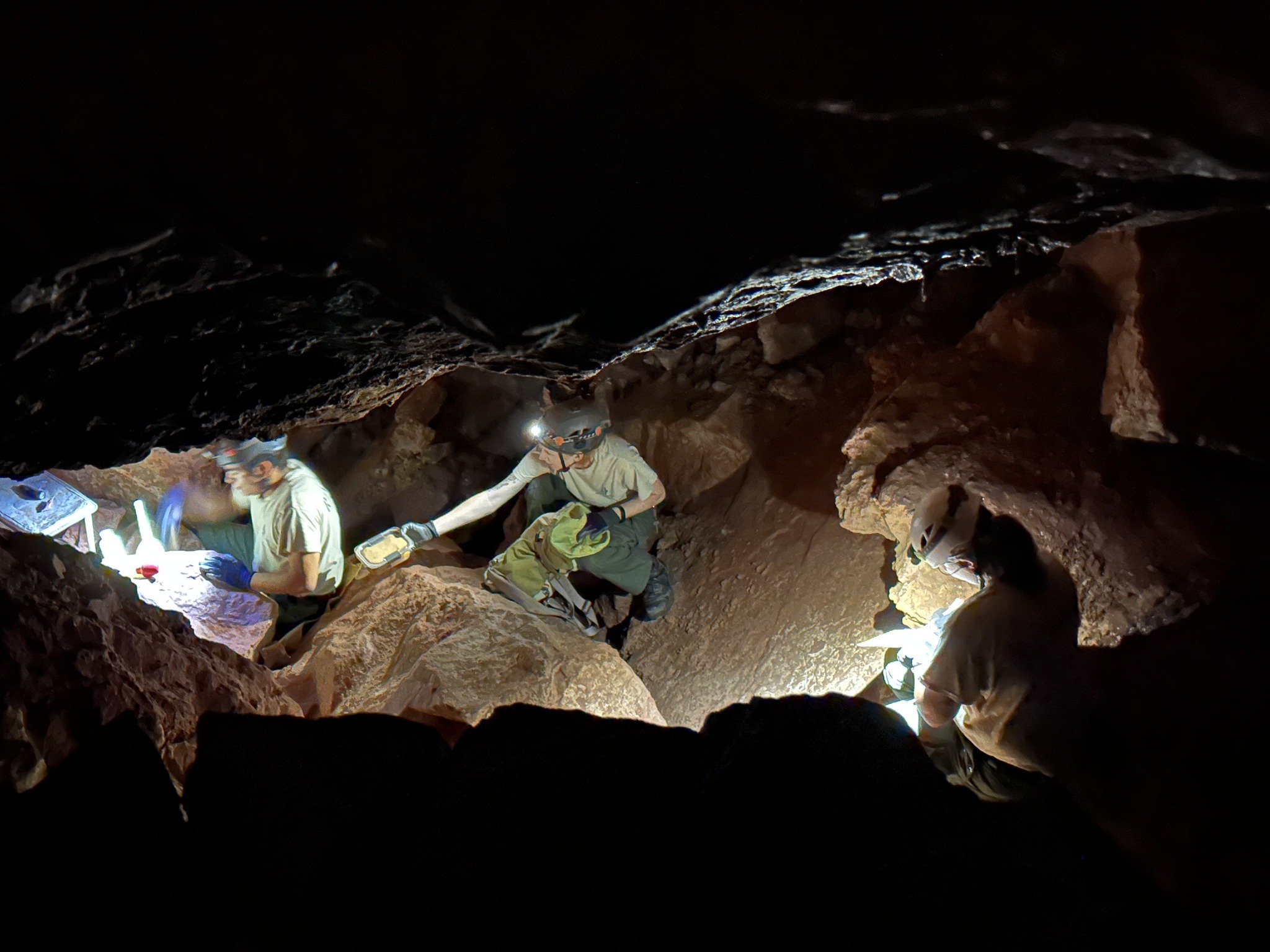
More Than Just a Cave: How Karst Shapes Our World
June 6, 2025
Arizona’s landscape is made up of some beautiful formations like mountains, valleys, canyons, and karst... Wait, karst? This term might be unfamiliar to you, but chances are, you've seen or even stood on one!
Karst refers to a landscape feature that is shaped by water dissolving rock—typically limestone, gypsum, or marble. The result? Caves, springs, sinkholes, aquifers, and underground rivers. These features are not only stunning to look at, but also crucial to everyday life. Karst landscapes account for 40% of the drinking water in the United States. So even if you’ve never thought about karst before, you’ve almost certainly relied on it.
Trying to picture a karst landscape feature here in Arizona? Kartchner Caverns, near Benson, is a perfect example. This breathtaking cave system is open for tours and offers a chance to explore a cave where formations are still actively growing. Other iconic karst features in Arizona include the Devil’s Kitchen sinkhole in Sedona, the springs that feed Fossil Creek in the Coconino National Forest, and Colossal Cave near Vail. Even Tonto Natural Bridge, believed to be the world's largest natural travertine bridge, is an example of karst. The natural bridge was formed by precipitation that seeped underground through fractures and weak points in the rock, resulting in limestone aquifers and emerging springs that dissolved the area’s limestone into that impressive 400-foot-long tunnel.
How Water Shapes the Underground
Karst landscapes are nature’s Swiss cheese. Rain and snowmelt soak into the ground and run into faults, passing through soil and dissolving soft rock below. Over time, this creates underground drainage systems, caves, and aquifers—natural reservoirs that store water.
If you’ve toured Kartchner Caverns, you’ve felt how moist of an environment it is. Your glasses may fog up and you'll notice that dewy sensation on your skin that is so rare to feel in Arizona's arid climate. The cave's 99% humidity is no coincidence; it’s directly tied to the aquifer beneath it. Because the cave has remained protected and airflow is minimal, reducing evaporation, the formations inside are still growing. It’s a rare example here in Arizona of water at work underground.
Why Karst Conservation Matters
 While karst is incredibly porous, making it excellent at moving water, it is also a sensitive landform with vulnerabilities. Environmental factors like drought, flooding, and pollution, and human processes like development, water supply, and mineral use can drastically change these landforms. Aquifers can be depleted, sinkholes can collapse, and groundwater can be contaminated. Once a karst system is damaged, it may never fully recover. They are non-renewable natural resources.
While karst is incredibly porous, making it excellent at moving water, it is also a sensitive landform with vulnerabilities. Environmental factors like drought, flooding, and pollution, and human processes like development, water supply, and mineral use can drastically change these landforms. Aquifers can be depleted, sinkholes can collapse, and groundwater can be contaminated. Once a karst system is damaged, it may never fully recover. They are non-renewable natural resources.
Beyond its role in the water cycle, karst offers a wealth of scientific value. For example, caves serve as natural time capsules, preserving detailed records of Earth’s geologic and climate history in their mineral formations, sediment layers, and ice deposits. At Kartchner Caverns, researchers have conducted stalagmite core sampling that discovered mites and pollens that only exist in a Savanna grassland, giving us a clear picture of climate change here in Arizona. Researchers study these records to better understand how the planet has changed over time and what that means for our future. Incredible finds just within Kartchner Caverns include the skeleton of an 86,000-year-old Shasta ground sloth, a 34,000-year-old horse, an 11,000-year-old bear, and more.
Because caves are relatively stable environments, the research that can be conducted within them provides information about a wide range of subjects from astrobiology to meteorology, hydrology, zoology, and even medicine, like antibiotics and circadian rhythms.
Caves also hold deep cultural and educational value. They preserve archaeological sites that tell the story of human history. At the same time, caves inspire people of all ages to connect with the natural world. They spark curiosity, drive tourism, and create opportunities for hands-on learning. Experiences like touring Kartchner Caverns showcase natural beauty and build a deeper appreciation for geology, conservation, and the important natural resources that support life on Earth.
A Reason to Celebrate
Every year on June 6, National Cave and Karst Day shines a light on these hidden landscapes. It’s a chance to remind ourselves that these underground wonders are worth exploring, protecting, and appreciating.
Of course, you don’t need to wait for a day of recognition to experience it for yourself. A tour through Kartchner Caverns is unforgettable. Stepping into the cave is like entering another world. Once you’ve seen the beauty and complexity inside, you’ll understand why these places matter and why we work hard to protect them.

